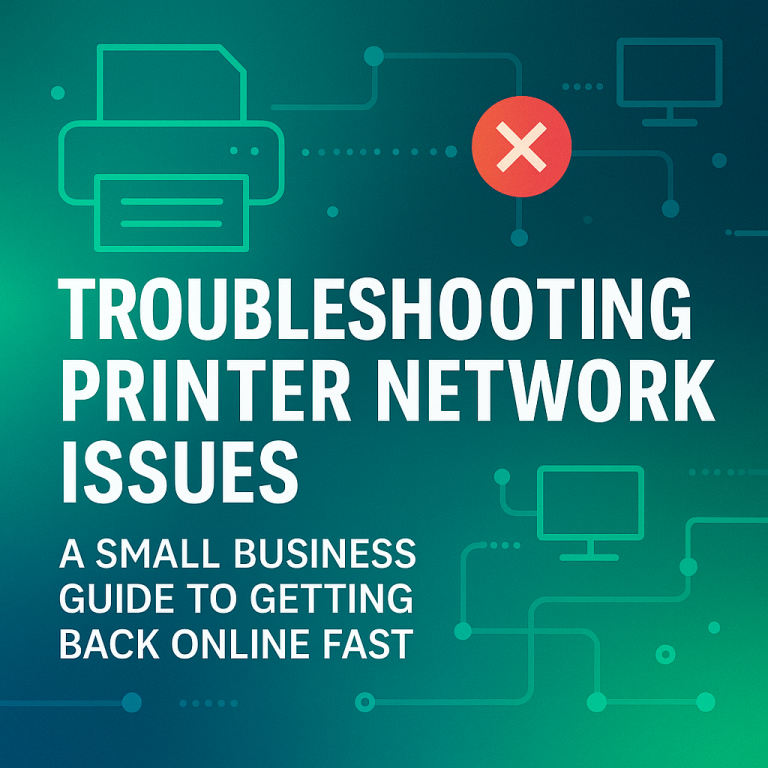As small businesses grow, the complexity of their network infrastructure tends to grow with them. More users, more devices, more applications and suddenly the basic all-in-one router from the internet service provider is no longer sufficient.
One of the most foundational components of a scalable, secure, and high performing business network is the network switch. Yet many business owners and office managers are not familiar with what a switch does, how it differs from a router, or why it matters.
This guide is designed to bridge that gap, offering a clear and technically accurate overview of network switches, written specifically for decision makers who are not networking professionals.
Understanding the Role of a Network Switch
A network switch is a dedicated piece of hardware that connects multiple devices within a local area network (LAN). This includes computers, printers, servers, VoIP phones, wireless access points, and more. The switch acts as a controller, directing data traffic to its correct destination efficiently and securely.
Unlike older technologies like network hubs—which broadcast data to every connected device switches operate at Layer 2 or Layer 3 of the OSI model. They identify devices by their MAC address or IP address and ensure that data packets are only sent to the intended recipient.
How a Switch Differs from a Router
A router is responsible for managing traffic between different networks. In most small office setups, that means connecting the internal network to the public internet. Routers assign IP addresses and handle firewall and NAT (Network Address Translation) functions.
A switch, by contrast, is focused on internal communication. It connects devices inside the network and facilitates high-speed, low latency data transfer between them. It does not manage internet access or routing to external networks unless it is a Layer 3 switch configured to do so.
In many small business environments, routers and switches work in tandem. The router connects the office to the internet, while the switch manages communication between internal devices.
Key Benefits of Using a Network Switch in a Small Business Environment
Increased Capacity
Switches expand the number of wired devices that can be connected to the network. While a standard consumer router may provide four LAN ports, a business class switch may provide 8, 24, 48, or more ports.
Improved Network Efficiency
Switches significantly reduce unnecessary traffic on the network by forwarding packets only to their intended destination. This reduces network congestion and increases performance, particularly when multiple users are accessing shared resources like file servers or printers.
Enhanced Security and Network Segmentation
With managed switches, businesses can implement advanced features such as:
- VLANs (Virtual LANs): Isolate traffic for different departments or functions
- Port security: Restrict which devices are allowed to connect
- Traffic monitoring and logging: Gain visibility into usage and potential threats
These features are particularly valuable in regulated industries or environments where internal segmentation improves both performance and compliance.
Types of Network Switches
Unmanaged Switches
These are plug and play devices with no configuration interface. They are suitable for very small offices or temporary setups, where simplicity is the priority and network segmentation is not needed.
Managed Switches
These provide a user interface or command-line access that allows for detailed configuration. Features include VLANs, QoS (Quality of Service), SNMP monitoring, link aggregation, and more. Managed switches are recommended for businesses that anticipate growth, handle sensitive data, or want to optimize for performance and security.
PoE (Power over Ethernet) Switches
Some switches offer Power over Ethernet, which allows them to deliver both data and electrical power over a single Ethernet cable. This is especially useful for powering devices such as VoIP phones, security cameras, and wireless access points without needing separate power adapters or outlets.
When Should a Small Business Use a Switch?
A network switch becomes necessary when:
- You need to connect more wired devices than your router supports
- You are deploying VoIP systems, networked printers, or internal servers
- You want to separate traffic across departments or functional areas
- You require high throughput for applications like video conferencing or file sharing
- You are working with an IT partner to future proof your infrastructure
How Exodata Supports Network Architecture
Exodata helps small and mid sized organizations design and manage scalable, secure network infrastructure. We assess your current environment, identify bottlenecks or risks, and deploy the right switching solutions to fit your needs and budget.
We also provide:
- Configuration of managed switches for optimal performance and security
- VLAN implementation for segmented access control
- Ongoing monitoring and maintenance of your switching infrastructure
- Documentation and support for compliance or auditing purposes
Our goal is to ensure that your network does not just work it works reliably, securely, and with enough flexibility to adapt as your business grows.
Conclusion
A network switch may not be the flashiest piece of hardware in your office, but it is absolutely critical for any business that relies on stable internal communication and efficient device connectivity. Investing in the right switch whether unmanaged or fully managed can pay dividends in performance, manageability, and security.
If your current network is showing signs of strain, or if you are unsure whether your switching infrastructure is meeting modern standards, we can help.
Contact Exodata today to schedule a consultation and explore how to strengthen your business network for the future.










